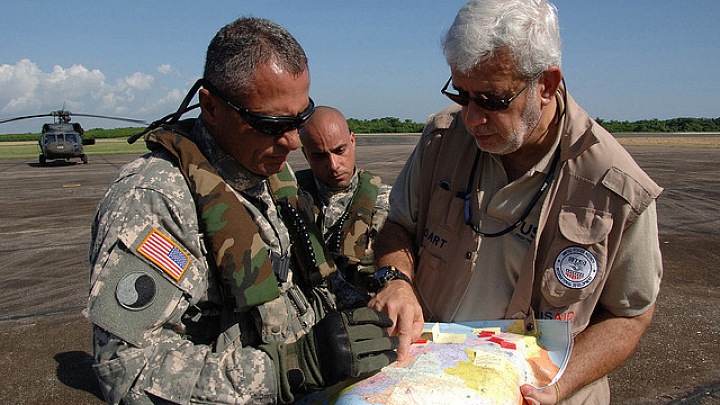
The humanitarian world often has a healthy suspicion of the military. This is understandable. It can be very dangerous for humanitarian organizations and USAID personnel to be conflated with the military, which skeptical locals sometimes consider the same thing as the CIA overseas. However, as a former member of the military I have seen military Civil Affairs units doing good, genuine humanitarian work in dangerous areas . . . winning the hearts and minds. And I have been out in Iraq interacting daily with the local Iraqis, as have many of my fellow soldiers.
The military and humanitarian organizations both deploy to dangerous areas that have severe needs. But they rarely, with notable exceptions, ever share information, leading to an expensive duplication of effort by the military and aid organizations. In 2007, Ellen B. Laipson hypothesized in an excellent pieceon relations between NGOs and the intelligence and defense communities that information sharing was improving, but that “effective communication [still faced] many hurdles.” Nowhere was this more evident than during the recent Ebola crisis.
One of the clearest examples of the flexibility of mission the military can have during a humanitarian disaster came at the height of the Ebola crisis. As many aid organizations were either pulling their staff from infected areas or struggling to bring enough new people in, the military deployed personnel to these same locations. Whether that was an effective use of the military is open to debate. Yet overall, the military and humanitarian groups had the same mission: To stop the spread of the disease. What resulted from this cooperation was an unprecedented move by the National Geospatial-Intelligence Agency to share their open source
